|
I met journalist Stephanie DeMarco several years ago in Washington DC through a combined workshop of the AAAS Leshner Fellowship program for public engagement (which I was in) and another program for science journalism. She reached out to me a few months ago for a piece she was writing about therapeutic applications of tattooing for this piece in Drug Discovery News. It's a really well done article with a lot of great information and graphics. In addition to moi, she interviewed tattoo anthropologist Lars Krutak and acupuncturist/tattooist Douglas Wingate, who have been guests on the Inking of Immunity podcast I cohost, and biomedical engineer Carson Bruns, who is on our invitation list for the coming season.
0 Comments
This new article is based on data collected at the 2017 Northwest Tatau Festival and is the first publication of analysis from those data. Summarizing the article in one sentence: "The psychological and physical experience of being tattooed may contribute to physiological adaptations that prepare the skin for other injury." Click on this link to the full PDF. Below is a slide show of photos from the tattoo festival for your enjoyment while reading. I've been terrible about posting podcast episodes because we're so busy putting them out! We wrapped season 2 last month with a few interviews, including this one with art therapists Simone Alter-Muri and Sarah Nangeroni. I really like the idea of asking people to talk about their tattoos to get at therapeutic information they might not otherwise think to share.
Listen here and remember to subscribe! Last semester, I started a new podcast for the Inking of Immunity project. I am the executive producer and cohost the podcast with UA doctoral student Mike Smetana and University of Sunderland (UK) evolutionary psychologist Dr. Becci Owens. Check out our new preview episode wherever you download your podcast, then go back and listen to our last season. Of course, be sure to like, subscribe, review, tell your friends, tell your enemies, etc.
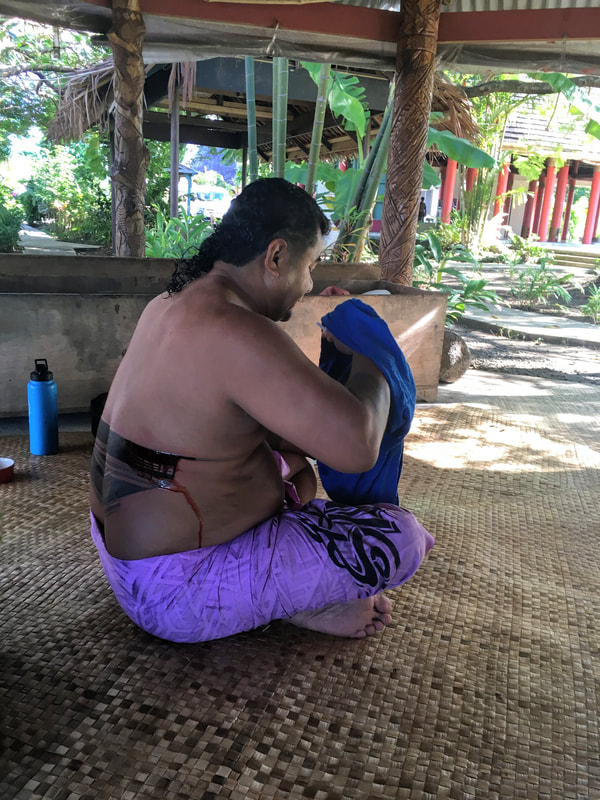 I’d been in Samoa for a month, studying Samoan tattooing culture and the impact of the big traditional pieces called pe’a and malu – tatau in general – on the immune system. Now I was getting my own hand-tapped leg tattoo, albeit considerably smaller. This field season was the fourth of my research on the relationship between tattooing and immune response. My first study had focused on a small sample, mostly women, in Alabama. What I’d observed among that group suggested that tattooing could help beef up one’s immune response. But one small study in the United States wasn’t proof of anything – despite headlines blaring that tattoos could cure the common cold. Good science means finding the same results multiple times and then interpreting them to understand something about the world. That’s why I traveled in 2018 with fellow anthropologist Michaela Howells to the Samoan Islands. Samoans have a long, continuous history of extensive tattooing. Working with contemporary machine and hand-tap tattooists in American Samoa, we wanted to see if we’d find the same link to enhanced immune response. 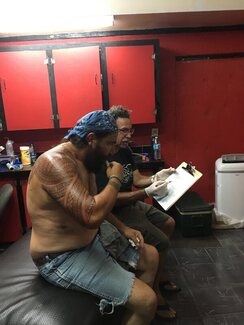 Chris Lynn collecting data in American Samoa. Michaela Howells, CC BY-ND Chris Lynn collecting data in American Samoa. Michaela Howells, CC BY-ND Immune defenders rush to tattoo’s tiny wounds More than 30% of Americans are tattooed today. Yet, few studies have focused on the biological impact beyond risks of cancer or infection. Tattooing creates a permanent image by inserting ink into tiny punctures under the topmost layer of skin. Your body interprets a new tattoo as a wound and responds accordingly, in two general ways. Innate immune responses involve general reactions to foreign material. So getting a new tattoo triggers your immune system to send white blood cells called macrophages to eat invaders and sacrifice themselves to protect against infection. Your body also launches what immunologists call adaptive responses. Proteins in the blood will try to fight and disable specific invaders that they recognize as problems. There are several classes of these proteins – called antibodies or immunoglobulins – and they continue to circulate in the bloodstream, on the lookout lest that same invader is encountered again. They’re at the ready to quickly launch an immune response the next time around. Your body also launches what immunologists call adaptive responses. Proteins in the blood will try to fight and disable specific invaders that they recognize as problems. There are several classes of these proteins – called antibodies or immunoglobulins – and they continue to circulate in the bloodstream, on the lookout lest that same invader is encountered again. They’re at the ready to quickly launch an immune response the next time around. This adaptive capacity of the immune system means that we could measure immunoglobulins in saliva as approximations of previous stress caused by tattooing. In American Samoa, Howells and I worked at the Historic Preservation Office to recruit study participants with help from tattoo artists Joe Ioane of Off Da Rock Tattoos, Duffy Hudson of Tatau Manaia and traditional hand-tap tattooist Su'a Tupuola Uilisone Fitiao. Our sample of 25 tattoo recipients included both Samoans and tourists to the island. We collected saliva at the start and end of each tattoo session, controlling for the tattoo duration. We also measured recipients’ weight, height and fat density to account for health. From the saliva samples, we extracted the antibody immunoglobulin A, as well as the stress hormone cortisol and inflammatory marker C-reactive protein. Immunoglobulin A is considered a frontline immune defense and provides important protections against frequent pathogens like those of the common cold. By comparing the levels of these biological markers, we determined that immunoglobulin A remains higher in the bloodstream even after tattoos heal. Furthermore, people with more time under the tattoo needle produced more salivary immunoglobulin A, suggesting an enhanced immune response to receiving a new tattoo compared to those with less or no tattoo experience. This effect appears to be dependent on receiving multiple tattoos, not just time passed since receiving one. This immune boost may be beneficial in the case of other skin injuries and for health in general. Tattooing seems to exert a priming effect: That’s what biologists call it when naive immune cells are exposed to their specific antigen and differentiate into antibodies that remain in the bloodstream for many years. Each tattoo prepares the body to respond to the next. Other studies find that short-term stress benefits the immune system. Stress’s bad rap comes from chronic forms that really do undermine immune response and health. But a little bit is actually good for you and prepares your body to fight off germs. Regular exercise provides immune function benefits through repetition, not necessarily single visits to the gym. We think this is similar to how each tattoo seems to prepare the body for vigilance. Our Samoan findings supported the results of my first study in Alabama. But of course correlation does not imply causation. Enhanced immune response is correlated with more tattoo experience, but maybe healthier people heal easily from tattooing and like to get them more. How could we find out if getting tattoos could actually make a person healthier? ‘Tatau belongs to Samoa’ Samoans have the oldest continuous tattoo culture in the Pacific Islands. Though many Samoans complain that young people are getting tatau for fashion, most get them to honor their heritage, saying their tattoo belongs not to them but to Samoan culture. 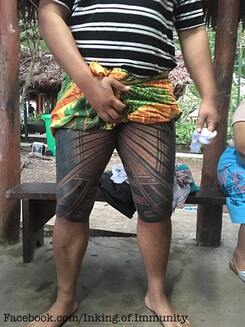 Samoans usually obtain permission from family to receive pe'a and malu. Getting and wearing these tattoos involve many responsibilities and indicate willingness to serve one’s community. Several of the Samoans in our sample had little interest in getting other tattoos, and one even reported being afraid of needles. They get pe'a and malu for the importance of these tattoos to their cultural identity, not because they are fashionable ways to show off. The social expectations for Samoans mean that getting pe'a or malu is less about self-motivated fashion choices than getting a tattoo is in the U.S. This is why Samoa is a great place to investigate whether the immune bump we see after tattooing is due to healthier people going under the needle in the first place – in Samoa people of all body types and walks of life get them, from priests to politicans. In July 2019 I focused on collecting multiple biological samples from people getting intensive tattoos in Apia, where they are administered daily in the center of town. I collected around 50 saliva samples from a dozen participants that will be analyzed in the coming year by anthropological immunologist Michael Muehlenbein. An evolutionary take on tattoos Tattoos may provide visual evidence that others home in on to identify healthy mates or hardy friends. Such signals of fitness have been compared to peacock tail feathers, which would be too much of a burden if the peacock were not have enough to escape predators. Even in the modern environment with improved health care, tattoos may “up the ante” by artificially injuring the body to demonstrate health. In a study I conducted among nearly 7,000 undergraduates, male intercollegiate athletes in general and football players in particular were more likely to be tattooed than non-athletes and less likely to suffer tattoo-related medical problems than those non-athletes who were tattooed. It’s not clear that the benefits tattooing provides are big enough to make a clinical difference on health, so don’t expect a new tattoo to cancel out a diet of cheeseburgers and fries. But there is no doubt that tattooing is associated with toughness, and that we humans influence each other through impressions as much as reality.  Na ou i ai i Samoa mo le masina, e sailiili i le tu o tāga tatau faaSamoa ma le aafiaga o mamanu tetele e iai le pe‘a ma le malu –poo le tatau i lona tulaga lautele –i le mafai e le tino o le tagata ona tali atu i siama. Na i‘u ina ta ai loa ma la‘u pe‘a i lo‘u vae, e ui e laitiiti mamao atu. O le vaitau lea o a‘u suesuega i nofoaga i tua, ma e atoa i ai le fa o a‘u suesuega faatino i le faiā o le tāina o le pe‘a ma le tete‘e poo le tali atu o le tino o le tagata i faama‘i poo ni siama. O la‘u sailiiliga muamua na faapitoa i se vaega to‘alaiti, e matele i tamaitai, i Alabama. O le mea na ‘ou matauina na faaataata mai ai, e mafai ona fesoasoani le taina o le pe‘a e siitia ai le mafai ona tete‘e pe le tali atu i inifeti ma siama. Ae lē lava se suesuega itiiti se tasi i Amerika e faamaonia ai se o‘oo‘oga o le mataupu –e ui i ulutala matamata tetele o faasalalau solo ai le fo‘ia o le fulū masani i le tāina o le pe‘a. O le mea tonu e ta‘u o le faasaienisi maumaututū, o le maua lea o le tali lava e tasi, mai le lasi o suesuega, ona faauiga lea ia maua ai se malamala‘aga e faatatau i le lalolagi. O le mafuaaga lena na ma malaga ai ma Michaela Howells, i le matātā lava e tasi tau Su‘esu‘ega o Tagata, i motu o Samoa. E loa le talafaasolopito faifaipea o tāga tatau i Samoa. Sa faaaogā masini faaonaponei ma sa ta lima fo‘i pe‘a, ona sa matou fia iloa pe maua ai le fesootaiga lava e tasi - o le faasiliga malosi e maua e le vaega tetee siama o le tino. Lāgā le vaega tete‘e siama e puipui manu‘a iti mai le tāina o le pe‘a E silia ma le 30% o tagata Amerika e ta a latou pe‘a [e o‘o mai] i le asō. E ui i lea, e laiti suesuega na faia i ni aafiaga faapaiolo e ese mai ma lamatiaga tau kanesa poo le inifeti. O le tāina o le pe‘a e gaosia ai se ata tumau pe a o‘o le lama (vaitusi) i pu iti ua taina i lalo ifo o le vaega pitoaluga o le p ‘u. E manatu lou tino o se manu‘a le pe‘a ma e faapenā ona tali atu i ai i ni auala se lua. O le gaoioiga faanatura a le tino e teena ai se faamai poo se inifeti, e aofia ai le tali masani i soo se mea fou e alia‘e. O le mea lea, o le tāina o le pe‘a, e faaosofia ai le vaega tetee faama‘i e ‘auina atu ni sele papa‘e o le toto e ‘aina le ‘au osofa‘i, ma tete‘e atu i ai tusa pe mamate ai (sele papa‘e), a ia puipuia le tagata mai le inifeti. O le mafai e le vaega teesiama o le tino ona ola fetuunai, na maua ai le avanoa e fua ai le porotini imunekelopulini e maua i le fāua, ‘auā se ata faatusatusa o le tūgā e o‘o i ai pe a ta se pe‘a. I Amerika Samoa, na ma galulue ma Howells i le ofisa Faasao o Talafaasolopito e saili ni tagata e faatino ai le suesuega, ma sa fesoasoani mai atisi ta pe‘a ia Joe Ioane mai le Off Da Rock Tattoos, Duffy Hudson mai le Tatau Manaia, ma le tufuga ta tatau ia Su‘a Tupuola Uilisone Fitiao. O tagata e to‘aluasefululima na lautogia mo le tāgā pe’a e aofia ai tagatanuu o Samoa ma turisi asiasi mai.  Chris Lynn na aoina faamaumauga i nei i Amerika Samoa. Michaela Howells, CC BY-ND Chris Lynn na aoina faamaumauga i nei i Amerika Samoa. Michaela Howells, CC BY-ND Na matou aoina faamaumauga o fāua i le amataga ma le faai‘uga o tāgā pe‘a ta‘itasi, ma faapito‘augafa suesuega na ‘o le taimi na tatā ai. Na matou fuaina fo‘i le mamafa, le ‘u‘ūmi ma le māfiafia o le ga‘o i tino o le ‘au tatā, e iloa ai le tulaga o lo latou soifua mālōlōina. Mai su‘esu‘ega o le fāua, na matou tō ‘ese mai ai le vaega tetee faama‘i A, le homoni e tutupu mai ai faalogona o le lē to‘a, atoa ai ma le porōtini-C lea e faailo mai ai ua lūgā se manu‘a. O le vaega tete‘e faama‘i A ua faatusa nei o le ulua‘i talipupuni tāua, e puipuia le tagata mai siama e pei o ituaiga e maua i le fulū masani. O le faatusatusaga o tulaga o nei faailoilo tau paiolo, na matou mautinoa ai le maualuga o le vaega tetee faama‘i A i totonu o ālātoto, e o‘o lava ina ua pepē manu‘a o le pe‘a. E lē gata i lea, o i latou ua faatele ona tofo i le au o tāgā pe‘a, na tele le porotini (Imunekelopulini) tete‘e siama na maua i o latou fāua, e faaata mai ai le siitia o le malosi teesiama mo ē ua toe ta, e faatusatusa ia i latou ua faato‘ā tatā ma e le‘i o‘o lava i lea faiva. O lea aafiaga e faalagolago i le ta so‘o o le tino, ae lē na ‘o se vaitau ua mavae talu ona ta. E ono aogā lea malosi faasili mo le vaega teesiama ‘aua nisi manu‘a o le pa‘u e alia‘e mai, atoa ma le soifua mālōlōina lautele. E foliga mai a ta le pe‘a, e mafai ona aogā lea mo le tino o le tagata. O se molimau lena mai le ‘au suesue i le matātā faapaiolo, pe a faailoa tonu sele tetee faama‘i i molekiule e fitoitonu i ai, ona aga‘i sa‘o lea i pōlōtini magalua ia e faamautū pea i totonu o ālātoto o le tagata i le tele o tausaga. O taimi uma e ta ai se pe‘a o le taimi fo‘i lena o loo tapena lelei ai le tino e tali fuaitau atu i se isi tāgā pe‘a e soso‘o ai. Na māua i isi suesuega le aogā o le lē to‘a (o le tagata) mo sina vaitau puupuu, ma e penefiti ai fo‘i le vaega tetee faama‘i o le tino. O le ituaiga faalēlelei, o le ituaiga lē to‘a lea e matuā olopalaina ai le vaega teesiama ma le soifua mālōlōina o se tagata. Peita‘i e aogā sina lē to‘a ititi aua e tapena ai lou tino e tetee atu i siama. E aogā faamalositino masani mo vaega tetee faama‘i o le tino pe ‘a fai ma masani, ae lē na ‘o aso ta‘itasi e asi ai se fale toleni. Matou te manatu, e tai tutusa lea ma le tapenaina e le tatau o le tino, ina ia mātaala mo soo se faafitauli e ono tula‘i mai. Na lagolagoina e faaiuga i Samoa a matou ulua‘i suesuega i Alabama. Ae lē faapea a felāta‘i ona faailo mai ai lea o ‘i‘ina le mafuaga tonu. E moni e felāta‘i le ta faafia o le tino o le tagata, ma le siitia o le malosi o le vaega tetee faama‘i o le tino, ae atonu o tagata e mālōlōina atu, e pepē gofie o latou manu‘a mai le taina o pe‘a, ma latou fiafia fo‘i e ta soo o latou tino. E faapefea ona tatou iloa ma le toto‘a o le ta so‘o o pe‘a i le tino e mafai ona mālōlōina atili ai se tagata? ‘O Samoa e ana le Tatau’ E i a Samoa le aganuu ta pe‘a pito i matua o loo faaauau pea i totonu o motu o le Pasefika. E ui e toatele tagata Samoa e faitio i le ta o tatau a le tupulaga ona o tifiga, ae mo le toatele o ia tupulaga, e mafua ona o le faaaloalo i o latou tupuaga ma na latou ta‘ua e faapea, o a latou tatau o se mea totino o le aganuu Samoa.  E masani ona sailia le faatagāga a aiga pe afai e fia ta se pe‘a poo se malu. O le taina ma le la‘eiina o le tatau e aofia ai le tele o tiute tau‘ave, ma e faailoa mai ai le agaga malie e fai le faiva o le tautua i nuu ma alālafaga. O nisi o tagata Samoa na auai i le sailiiliga, sa faailoa lo latou lē manana‘o i isi ituaiga pe‘a, o se tasi fo‘i o sui na ta‘ua lona fefe tele i nila. Na ta a latou pe‘a ona o le tāua o nei tatau ma malu i o latou faasinomaga faaleaganuu, ae le ‘ona o le fia faaalialia. O lagona masani o le lautele o Samoa i le mafuaaga e ta ai se tatau a se tagata, e lē mafuli ona o le fia fai tifiga, e faatusatusa i le taina o se pe‘a i le Iunaite Setete. O le mafuaaga lea ua avea ai Samoa ma nofoaga sili e saili i ai, pe mafua le faasiliga malosi e maua e teesiama o le tino, ona e mālōlōina lava tagata o loo tatā -i Samoa, soo se ituaiga tino ma soo se tagata e ta, mai faifeau e o ‘o i sui o le mālō. Ia Iulai 2019, sa aga‘i tonu suesuega eseese faapaiolo na ao, i tagata na matuā fato‘ato‘a le taina ‘o o latou tino i Apia, e pei ona faatinoina i aso taitasi i le ogatotonu o le taulaga. E 50 vaega mo suesuega o fāua na ‘ou aoina mai tagata ‘auai e to‘asefululua, ma o le a auiliili e le tagata suesue i lea matātā faapitoa ia Michael Muehlenbein, i le tausaga a sau. O vaaiga eseese i le malaga a le pe‘a E mafai ona avea le pe‘a ma pine faamau vaaia e ‘a‘apa i ai tagata e faailoga ai uo mālōlōina poo ni uo tino malolosi. O ia faailo o le lava toleni o ia tagata, ua faatusa i fusi o fulu (matagofie) o le si‘usi‘u o le manulele iloga o le tuki, lea semanū e fai ma avega mamafa pe ana le malosi ma gafatia lava e lea manu ona sola ese mai ona fili. E oʻo lava i le siosiomaga faʻaonapo nei ma le aga'i i luma o le tausiga o le soifua mālōlōina, e ono siitia e le pe’a le malosi teesiama o le tino, e ala i le faafoliga mai ua manu’a le tino, ina ia faaalitino mai ai o loo mālōlōina. I se suʻesuʻega na ou faia i le lata i le 7,000 tagata aooga o faailoga amata, o tama afeleti mai kolisi ma iunivesite eseese, atoa ai ma tama ta‘a‘alo lakapi (Amerika), o i latou ia na tele ina ta a latou pe‘a nai lo e lē ta’aalo, ma o ia fo’i alii sa tau lē aafia i ni ma’i e afua mai le taina o se pe‘a, e faatusatusa i a i latou na ta a latou pe‘a ae le ta‘a‘alo. E le ‘o manino mai le lava o penefiti e maua mai le taina o se pe‘a, ina ia iai sona aafiaga iloga i le soifua mālōlōina, o le mea lea, vaai oe ne‘i e manatu e faaleaogā e le taina o se pe‘a fou lou tausami i peka-sisi ma pateta falai. E ui i lea, e lē fesiligia o le taina o le pe‘a, e feso‘otai ma le malosi (e gafatia ai fitā), e lē gata i lena, o tatou, tagata ola, e mafai ona aafia i tatou i le vaai ma mafaufauga e pei lava o le mea moni. https://theconversation.com/untangling-tattoos-influence-on-immune-response-121852 We're a little behind in our updates, so a few of these are dated...but without further ado.
This summer we ran a successful crowdfunding effort to fund the first half of a second field season to study Polynesian tattooing and immune response. I attended the Northwest Tatau Festival in Seattle/Tacoma, WA, where we collected data from 52 participants. Next step is to gather the funds to analyze the samples! 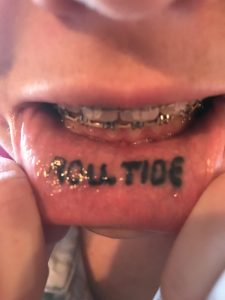 UA Anthropology graduate student Mackenzie Manns (Photo courtesy M. Manns).[/caption] UA Anthropology graduate student Mackenzie Manns (Photo courtesy M. Manns).[/caption]
Do my tattoos make me look more fit, or fit at all? Gosh, I hope so. Look over here at my guns—er, arms---and not at the middle age gut I’m fighting to suck in. In a study of 6528 undergraduates we conducted nationwide, we found that tattooing may be used by those who are generally more fit, especially among men, to highlight that fact. There is extensive ethnographic literature suggesting that tattoos are signs of status and social roles. They indicate marital status, age, success in life, affiliation, and so on. But contemporary tattooing seems so dispersed and idiosyncratic—do those same motivations still apply in today’s world? In 2012, Rachael Carmen, Mandy Guitar, and Haley Dillon suggested tattoos (and piercing, but we’ll come back to that) fit two evolutionary patterns of behavior—these body modifications may indicate our affiliations with successful groups or injure our bodies so we can heal and show off our healthy immune systems. In 2016, Cassie Medeiros and I wondered if media portrayals of tattooed athletes amplified that signal out of proportion—in other words, are there really so many tattooed athletes or do they just get the most press: ...Or both, in a positive feedback cycle? ...Or are fans more likely to get sports tattoos? After all, athletes at the intercollegiate or professional level are already obviously highly fit people, for the most part, and being recognized for such through through athletic performances---especially if they win! Maybe it’s the folks who aren’t on the teams getting all the ESPN attention who need to shout, "Hey look at MY hot bod!" Or, "Yes, I AM the 12th (hu)man responsible for the decade of football success at the Alabama, as you can see from my 'Roll Tide' tattoo." We tested these hypotheses in two online studies, asking undergraduates if they were tattooed, pierced, athletes, had any college or pro sport-related tattoos, and had ever had any related medical complications. The first study was a national study of 524 respondents but was inconclusive because of the low number of intercollegiate athletes who responded. For the second study, we surveyed all 31,000+ University of Alabama undergraduates and received 6004 usable responses, including 50% of UA’s 572 student athletes and 31 of our national championship (ahem, repeated championship) football team. Here's what we found:
Article Accepted Regarding Tattooing Among Intercollegiate Athletes and Other Undergraduates9/19/2018 In writing our chapter "Tattooing, Commitment, Quality, and Football in Southeastern North America" for Evolution Education in the American South, Cassie Medeiros and I hypothesized that tattoos would be more common among elite athletes to highlight their fitness or among non-athletes who were fit as an alternative way to advertise fitness (besides being an elite athlete). Our HBERG team then tested this using the Body Art Study Questionnaire (Mayers et al., 2002) via first a nationwide internet survey among undergraduates, then a survey of all 31,000+ University of Alabama undergrads. The first survey elicited around 600 responses but very few tattooed athletes among them. The repeat study elicited around 6500 responses and a full 50% of the UA intercollegiate athletes.
The article summarizing these findings, "Shirts or skins?: Tattoos as costly honest signals of fitness and affiliation among US intercollegiate athletes and other undergraduates," has been accepted by Evolutionary Psychological Science and is current in press. Several people worked on this project over the years, but the authors who ultimately pulled this together include Taylor Puckett (cleaned and set up data codebooks), Nick Roy (cleaned data, helped with analysis, and edited paper), and Mandy Guitar (developed the hypothesis we tested in Carmen et al. [2012], and edited paper). We're grateful to work done along the way by Connor Fasel, Kat Beidler, and Kira Yancey, as well as the title idea by Rob Else. We are allowed to provide an Author's Accepted Manuscript here for preview. Our findings were consistent with the Human Canvas Hypothesis (Carmen et al., 2012), an evolutionary hypothesis that suggests tattoos advertise fitness or affiliation:
To learn more, read our AAM here. |
Christopher D. LynnI am a Professor of Anthropology at the University of Alabama with expertise in biocultural medical anthropology. Archives
May 2023
Categories
All
|

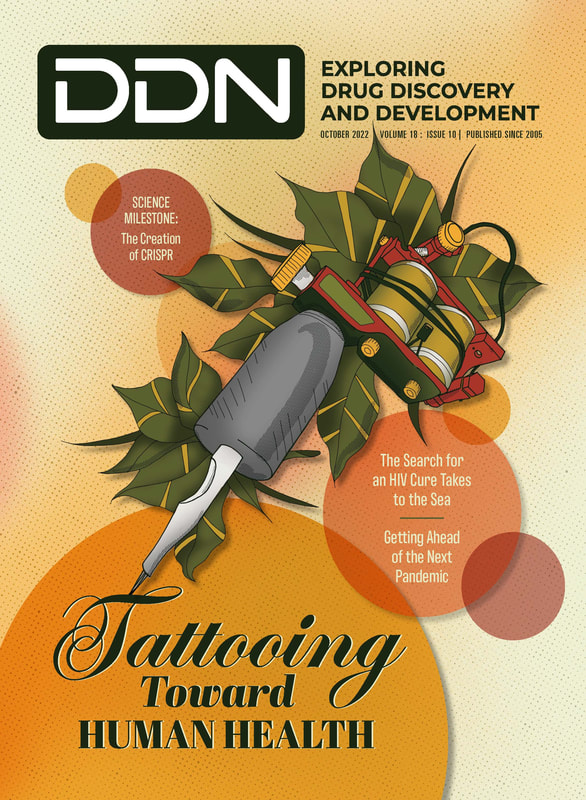
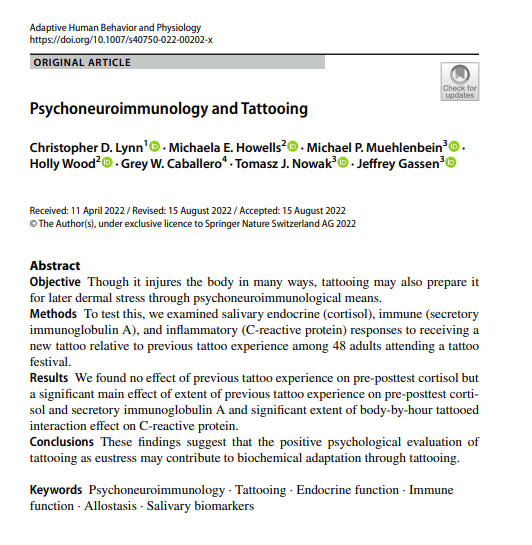


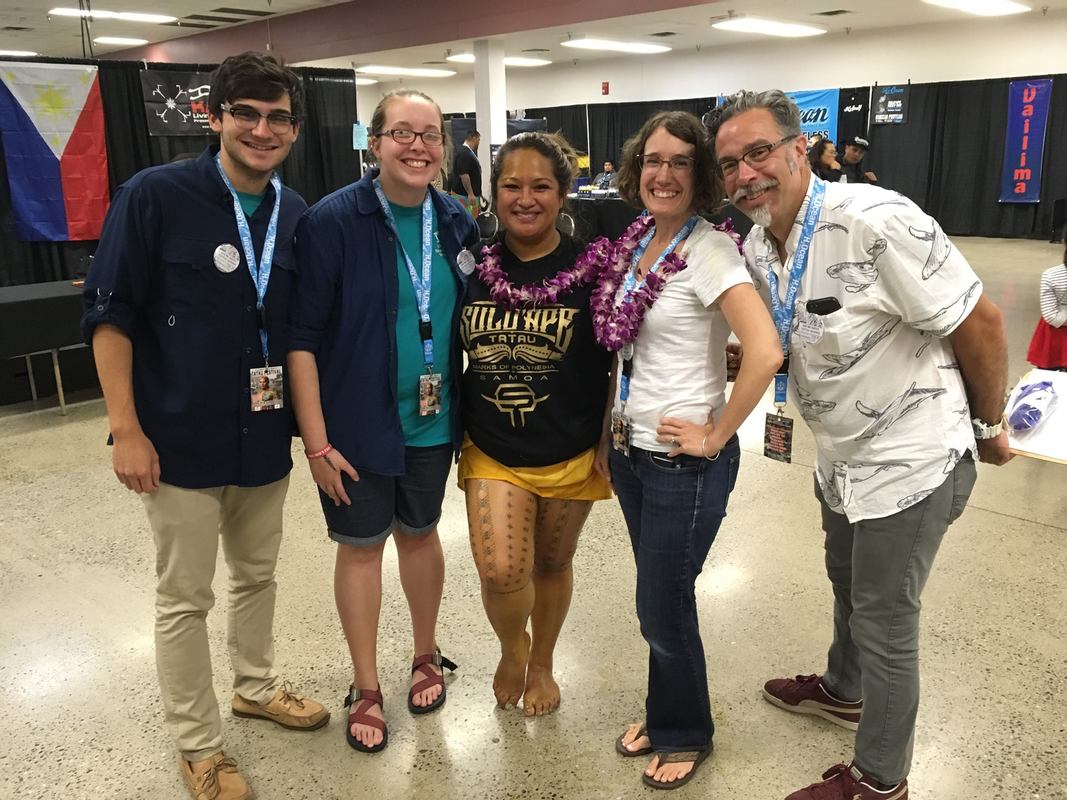
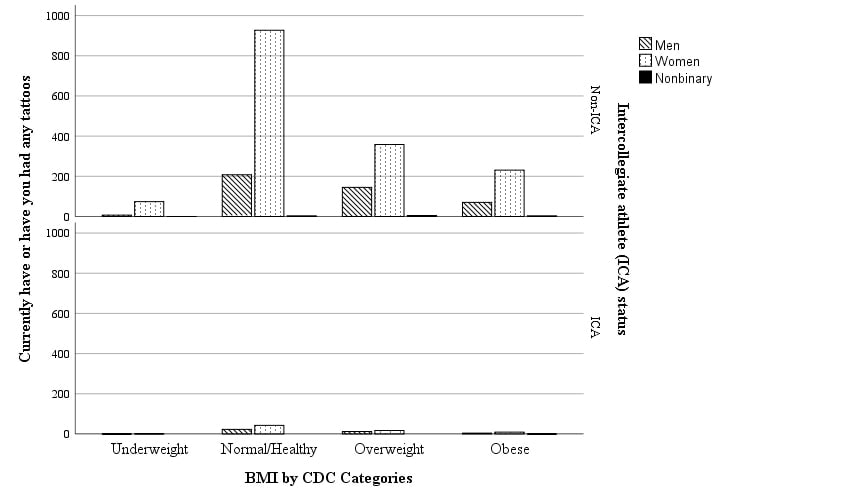
 RSS Feed
RSS Feed
